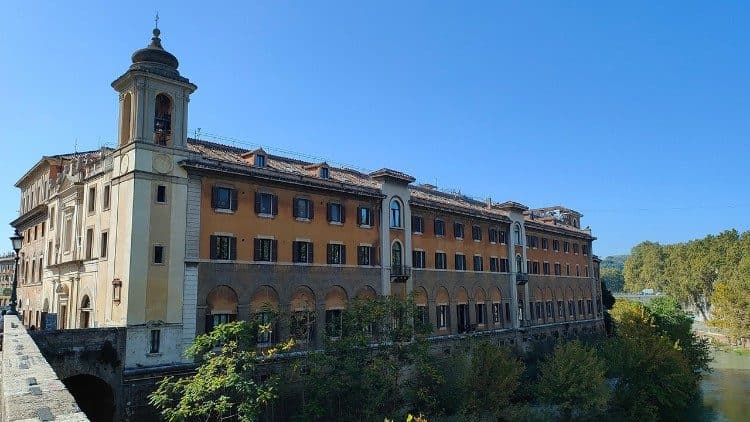ROME – A new novel by a Spanish priest, based on real-life events, captures the story of a remarkable tale of daring and deceit that saved the lives of scores of Jews, partisans and political prisoners in Rome during the Nazi occupation of the city in 1943 and 1944, and which features an anti-Nazi hero priest.
The novel, titled Una luce nella notte di Roma (“A Light in the Night of Rome”), is being presented today in Rome by author Father Jesús Sánchez Adalid, who serves as a pastor in Merida in western Spain as well as a professor of ethics at a nearby university.
Though fictionalized, the novel is based on actual events that took place at Rome’s Fatebenefratelli Hospital, located on the Tiber Island, during the war years.
In part, the novel tells the story of a Roman doctor, Giovanni Borromeo, who sheltered Jews at the hospital before and after a deportation order by the Nazis in September 1943, which led most Roman Jews to their deaths in Auschwitz.
With the support of the prior of the Fatebenefratelli order at the time, the Polish-born Father Maurizio Bialek, Borromeo admitted the Jews as patients. Fearing that the Nazis might search the hospital, some of those being sheltered spent their days hiding under a sewer access hatch located in the infectious disease ward, under an altar dedicated to the Assumption of Mary.
Realizing that wasn’t a long-term solution, Borromeo hit upon the idea of inventing an illness and telling the Germans to stay away from the hospital in order to avoid infection. He called it “Disease K,” describing it as lethal and highly contagious.
(Some historians believe the “K” was a mocking reference either to Herbert Kappler, who commanded the SS regiment in Rome during the occupation and was responsible for the notorious Ardeatine caves massacre, or to General Albert Kesselring, commander of the German armed forces.)
The ruse succeeded in convincing the Nazis to leave the hospital out of their round-ups, meaning that Jews sheltered there survived, as did a number of anti-Nazi partisans who were also welcomed and allowed to remain in hiding.
Borromeo’s role in saving Jewish lives was already known, and led to his recognition as “Righteous Among the Nations” by the Yad Vashem Holocaust Museum in 2004.
What’s new in the novel, however, is a love story that unfolded during the drama. Its protagonists were a couple named “Gina,” the daughter of a well-off Catholic family, and “Betto,” an impoverished Roman Jew. (Adalid used pseudonyms for the couple, saying the family requested it.)
Gina and Betto fell in love during the spring of 1943 and were among those given shelter in the hospital, from where they participated in the partisan resistance. Later, they emigrated to South America, telling their story to family members who eventually recounted it for Adalid.
Another central character in the tale is the real-life Father Didier Nobels, a Belgian priest born in 1899 who’s better known by the Italianized version of his name he took in Rome, “Don Desiderio.”
Ordained in 1926, Nobels came to Rome to study at the Gregorian University and remained in the city until his death in 1985. For much of that time he worked in the Vatican’s Propaganda Fidei, which today has been absorbed into the new Dicastery for Evangelization.
During the war, Nobels became the informal protector of hundreds of Italian soldiers who had deserted in order to join the partisans. He helped to organize a partisan detachment with the code name “Travertino,” which became responsible for leading the resistance in the poor neighborhoods of southern Rome which Nobels served as a pastor.
During that time, Nobels also arranged for some of those deserted soldiers to take shelter in the Fatebenefratelli Hospital, where he smuggled in a military radio so they could pass along intelligence to Allied forces making their way up the Italian peninsula and preparing to enter Rome. For his contributions, Nobel was presented in January 1945 with a medal of appreciation by General William Donovan, founder of the forerunner of the CIA.
Una luce nella notte di Roma goes on sale in Rome today. Originally published in Spanish in March by HarperCollins Ibérica, plans for an English translation are pending.














